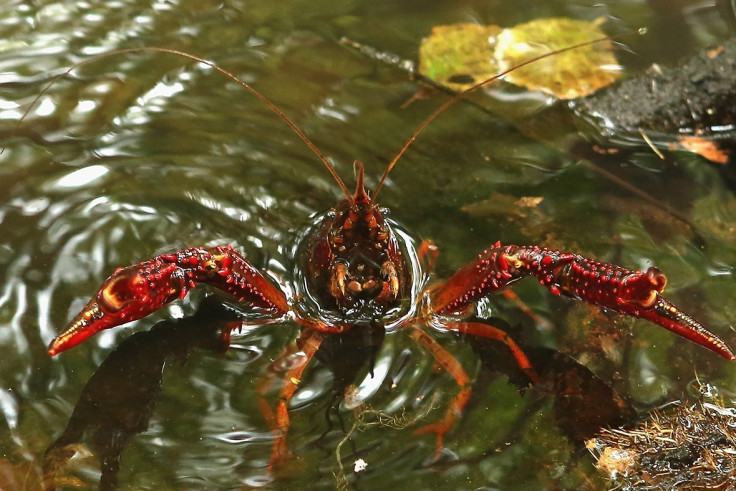Mutant crayfish learned to clone itself in a German pet store and is now taking over Europe
European and African lakes and rivers are being overrun by a clone army of crayfish.

An accident at a German aquarium has enabled an invasive species to make copies of itself, spread throughout Europe and even reach Africa, thereby devastating ecosystems and leaving nothing but more cloned copies of itself in its wake.
If that sounds like a bad sci-fi movie plot, it is just one more example that shows how truth is stranger than fiction.
A species of invasive crustaceans, called the "marbled crayfish" or "Marmokrebs", appeared almost instantly, notes a report in the New York Times. In the year 1995, a German pet store reportedly purchased a few Texas crayfish and a single mutation from one of the fish created a whole new species that was able to clone itself.
It is, until now, the only known species of crustaceans to show asexual reproduction, notes Science Magazine. The mutation made all the fish female, each one of them capable of reproducing exact copies of itself and each capable of starting up an entire population.
After escaping into the wild, the crayfish rapidly began taking over German waters, spreading throughout Europe and now, has even reached the African continent in 25 years.
"They eat anything— rotten leaves, snails or fish broods, small fish, small insects," says Frank Lyko, a molecular geneticist at the German Cancer Research Center in Heidelberg.
German hobbyists were fascinated by the large size of the marbled crayfish and the hundreds of eggs that each of them lay, according to NYT. The "Marmokrebs" then eventually spread across the land. The only issue was that each of the eggs bore only females, they never mated and all of them grew up, ready to lay eggs, all genetically identical to each other.
Feral Marmokrebs began to show up in creeks and waterways, sometimes walking hundreds of metres to populate new waters. Soon, they spread to Croatia, Czech Republic, Hungary, and Ukraine, notes the report. They were even found in Japan and Madagascar in later years. The researchers found that in Madagascar, where the climate is similar to Florida, the population of crayfish has increased 100-fold in 10 years, taking over the native crayfish population.
It reportedly took 15 years for scientists to sequence the Marbled crayfish's genomes. They found that it evolved from the slough crayfish, Procambarus fallax, from Satilla River in Florida and Georgia in the US.
The mutation was traced back to an instance of two slough crayfish mating and one of them having an anomaly in its sex cells. Normal sex cell has only one chromosome, but this one had two. This sex cell, by chance produced a female crayfish, intact, without any abnormalities or deformities. This new female ended up with three copies of chromosomes.
They then grew up to be able to produce eggs and fertilise them at the same time. The first batch of Marmokrebs could not mate with the slough crayfish because they were now mismatched. Also, they did not need to. They just started to reproduce rapidly. Even when male sloughs mate with the Marmokrebs, they do not actually father the offspring. The eggs are only fertilised internally, notes the Science Magazine report.
Since the original was fertile, all its copies will be fertile and all their copies will go on to reproduce perfect copies of themselves, the report added. "Maybe they just survive for 100,000 years," Dr Lyko speculated. "That would be a long time for me personally, but in evolution it would just be a blip on the radar."





















